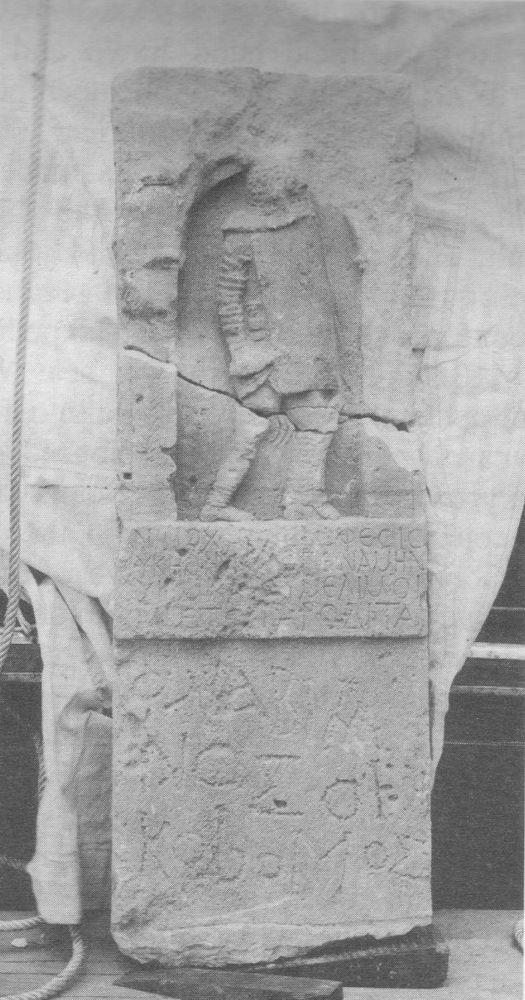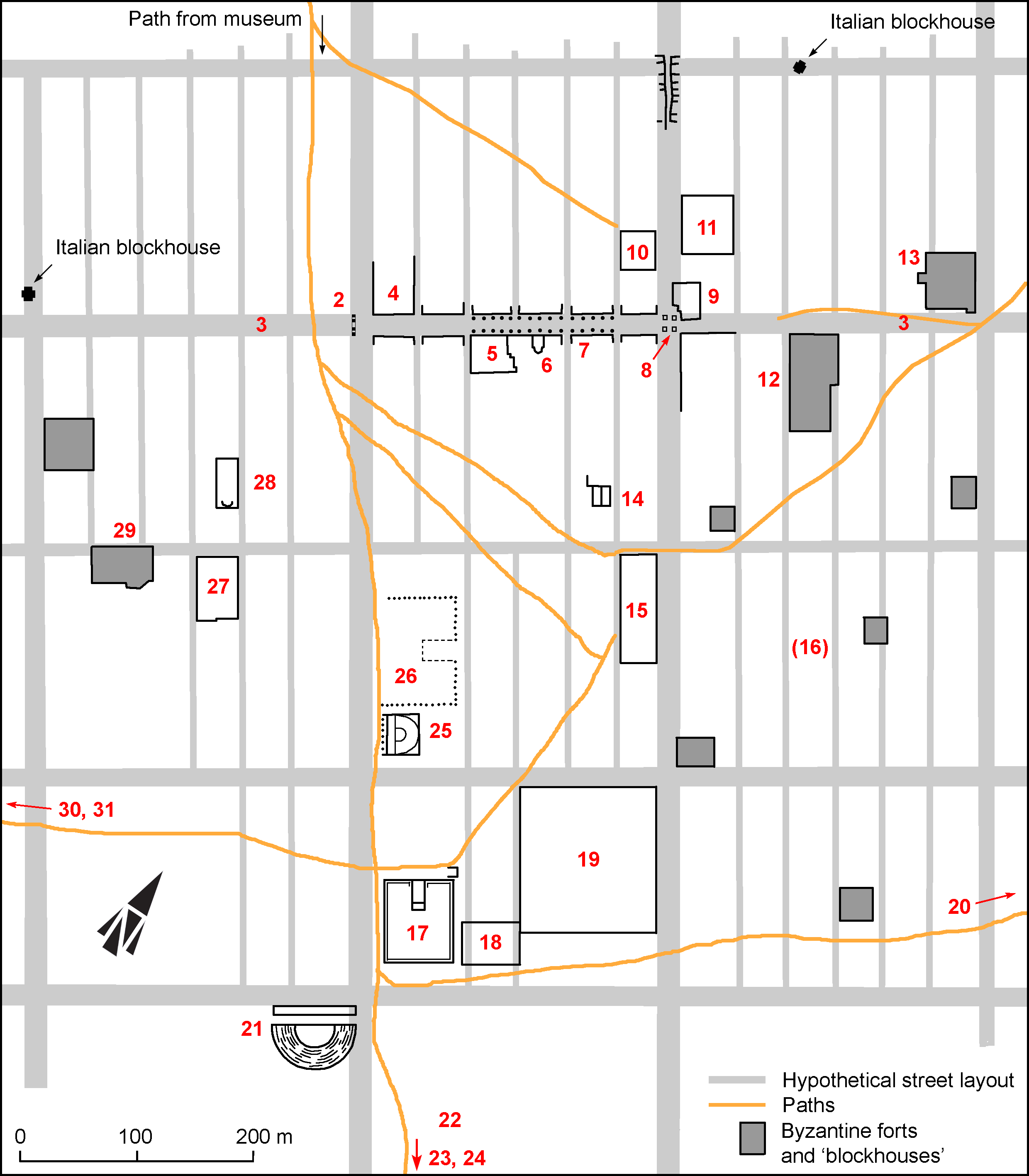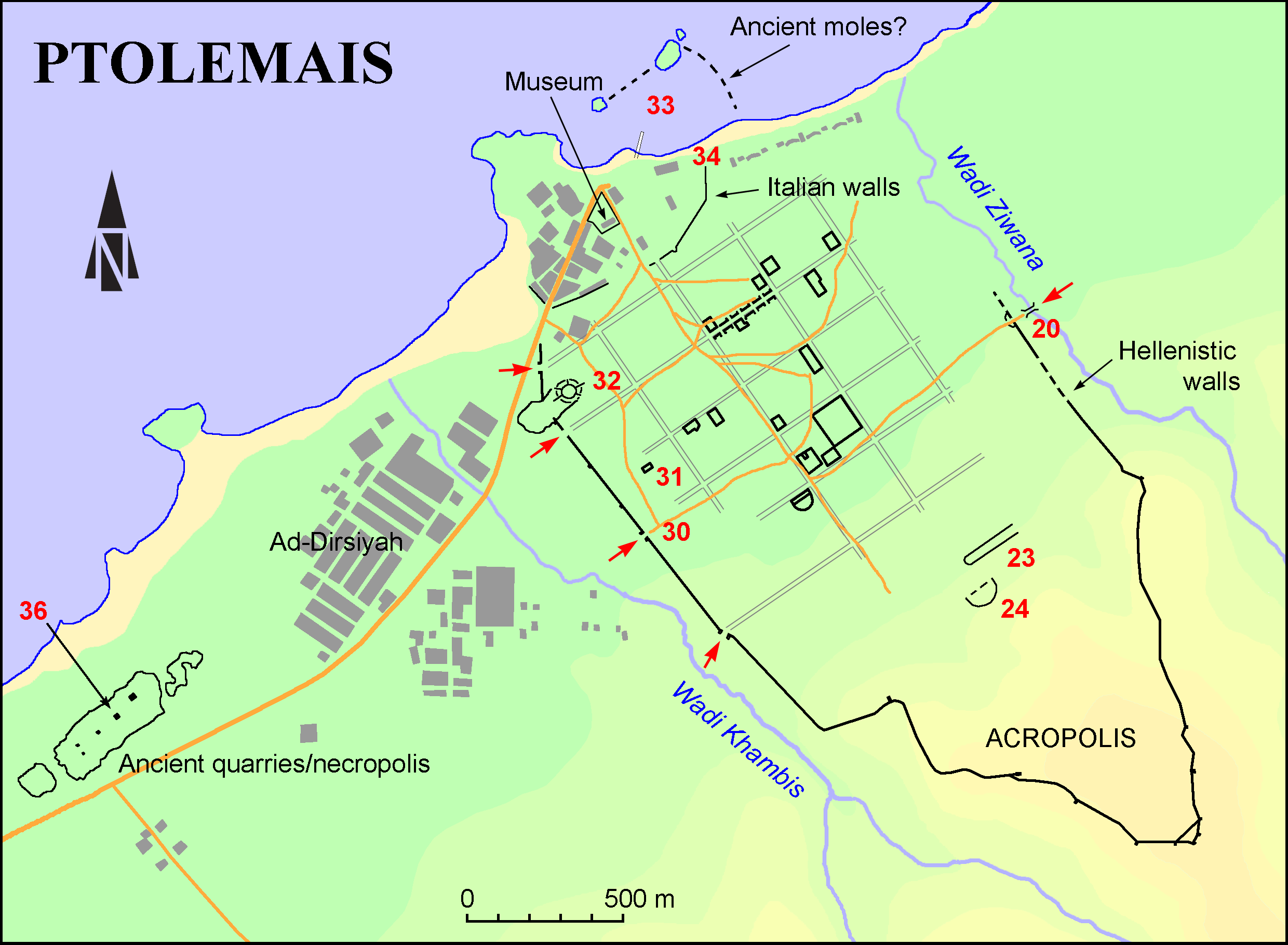EpiDoc XML:
GVCyr0172
Trismegistos ID:
105964
Source description
Support: Sandstone stele with a relief of a gladiator, later reused for IRCyr2020 P.398 on its lower part (dimensions not registered).
Layout: Inscribed in four lines on a projecting belt just under the relief.
Letters: Height not registered; projecting summit of alpha, delta and lambda, lunate epsilon, sigma, cursive mu and omega.
Date: Perhaps second century or first half of third century AD (lettering).
Findspot: Found by R. Norton in 1909 in Ptolemais ➚: exact findspot not mentioned.
Place of origin: Findspot.
Last recorded location: It was not seen by GVCyr team and is probably no longer in Libya.
Text constituted from: Transcription from previous editors and photograph (CDL).
Bibliography
Robinson 1913, n. 77a, pp. 185, 505, whence Sammelbuch 5940; Vollgraff 1919; Robert 1968, pp. 433-436; GVCyr 0017 ➚. Cf. Peek 1955, n.1135. Uhlenbrock 1999, p. 94, fig. 13, and Dobias-Lalou, BE, 2000.746, whence SEG, 49.2363.
Text
Apparatus
1: Ἀ̣τιοχᾶ[ς] ὁ πρὶν Ἐφέσις Robert 1968: Ἀ̣τιόχα [c. 5] Ἐφεσίς Sammelbuch; Ἀ̣τίοχος Ἐφέσιο[ς] Peek 1955
2: [καὶ] γενάμην: [καὶ] ἐ̣γεν⸢ό⸣μην Robinson 1913 Keil's reading; γενάμην Vollgraff 1919, Peek 1955
3: ἰμὶ: [εἰ]μὶ Robinson 1913
4: χ̣[α]ίρετε παρoδῖται: [χαίρ]ετε [π]αρ⸢o⸣δῖται Robinson 1913 Keil's reading; [χα]ί[ρ]ετε [ὦ π]αρ⸢o⸣δῖται Vollgraff 1919, Peek 1955
French translation
Antiokhas précédemment appelé Ephésios.
Je n'existais pas et je suis né. Je n'existe plus et point ne m'en soucie. Salut, passants.
English translation
Antiochas formerly named Ephesios.
I was not alive and was born. I am no longer alive and do not mind. Hello, passers-by.
Italian translation
Antiochas, prima chiamato Ephesios.
Non esistevo e sono nato. Non sono più e non me ne curo. Salute, passanti.
Arabic translation
أنتيوخاس، كان يُدعى سابقاً إفيسِس. لم أكن على قيد الحياة ولكن كنت قد ولدت. أنا لم أعد على قيد الحياة ولا أمانع. مرحبا، المارة (العابرون).
Commentary
This inscription was first seen by R. Norton, who visited Cyrenaica in 1909 for the first time. His copy was joined to the epigraphical material collected during his mission at Cyrene in 1910-1911 by the epigraphist H. De Cou and published by D.M. Robinson, who was not able to interpret by himself the copy but provided in addendum a transliteration sent by J. Keil. The stone, that was never seen since, was probably taken abroad, as J.P. Uhlenbrock rediscovered in Norton's archive a photograph of it taken aboard the ship Utowana with which Norton travelled in 1909.
The name was first explained as the masculine Ἀντιοχᾶς by L. Robert, who also understood Ephesios as a second name, possibly introduced by ὁ καί, but more plausibly by ὁ πρίν, as in two other epitaphs of gladiators at Ptolemais (see IRCyr2020 P.215 and IRCyr2020 P.216).
Metrical analysis: lines 2 and 3 were interpreted as a somewhat irregular hexameter independently from Norton's copy by both Keil (apud Robinson) and W. Vollgraff. But the photograph now gives a more precise view of the gaps: those lines appear to be made of metrical sequences, not belonging to any complete verse. Their formulation is a commonplace of stoicism. We have no information about the findspot. The topics of both this inscription and its reuse are clearly funerary, whereas for other steles mentioning gladiators the topic might be discussed (see at GVCyr0182). At l. 4, there is no space on the stone for Vollgraff's addition of ὦ, which would produce a more common dactylic rhythm, in spite of a somewhat harsh hiatus.
CC BY-NC-SA 4.0 Deed Attribution-NonCommercial-ShareAlike 4.0 International License.
All citation, reuse or distribution of this work must contain a link back to DOI: https://doi.org/10.60760/unibo/igcyrgvcyr2 and the filename (IGCyr000000 or GVCyr000), as well as the year of consultation.


